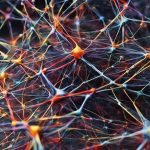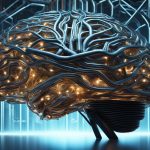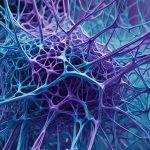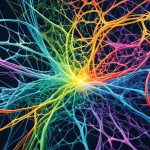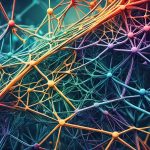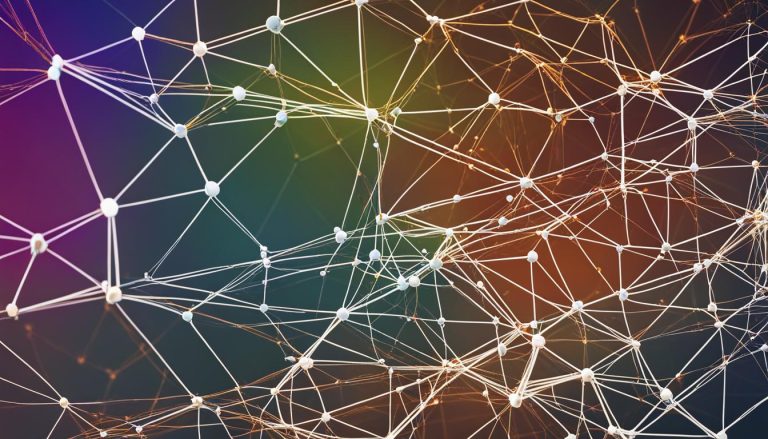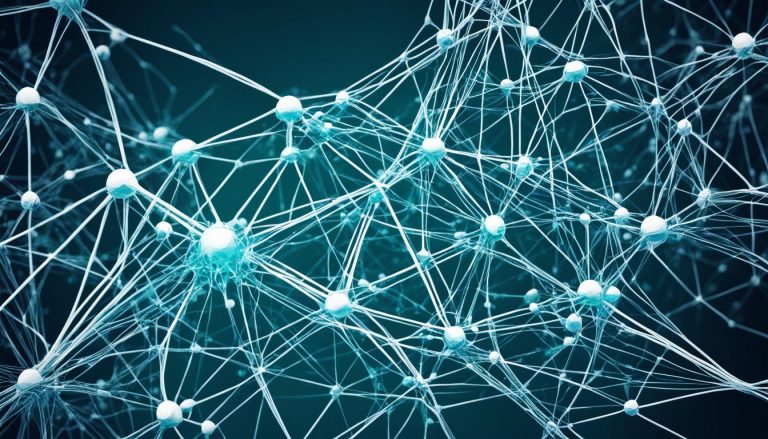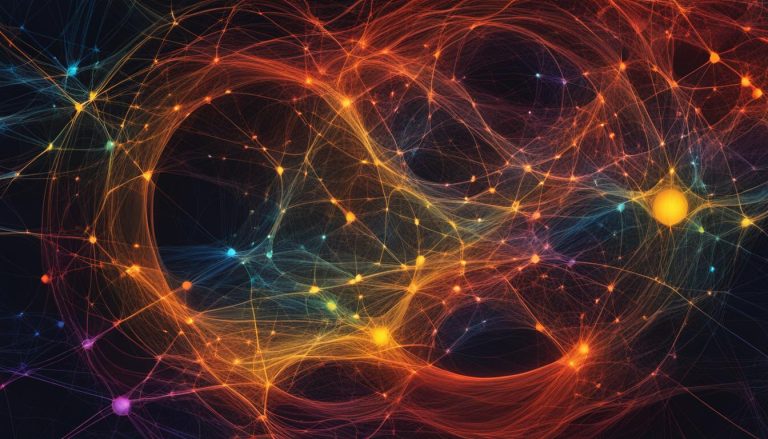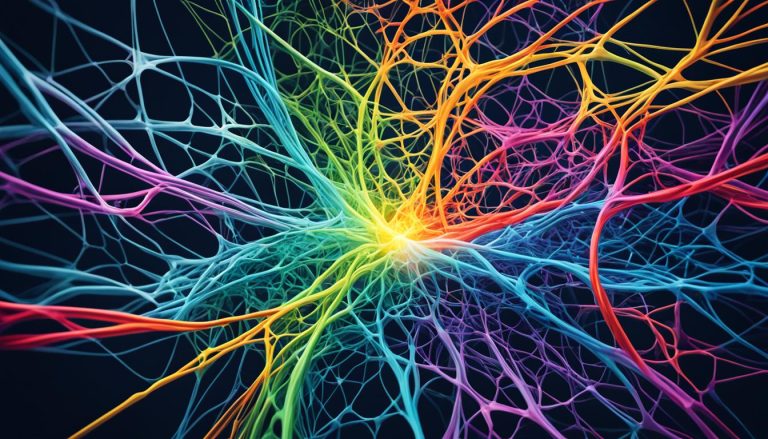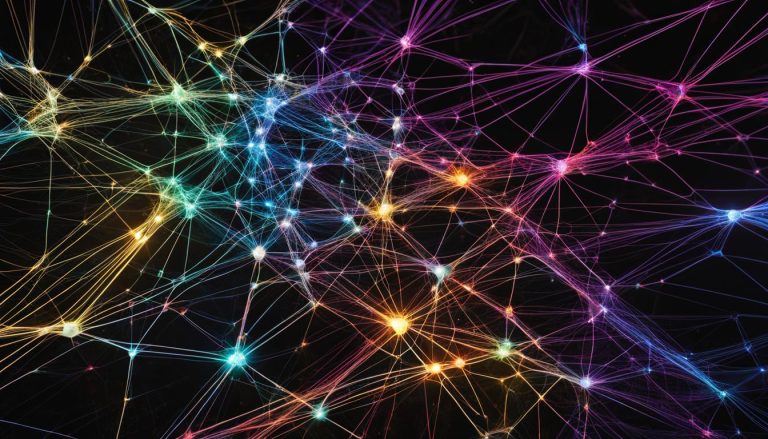Liquid State Machines (LSMs) are a fascinating computational model that draws inspiration from the behavior of liquids. With their dynamic and continuous nature, LSMs offer significant computational potential for various applications. They excel in tasks such as time-series analysis and sensory processing, making them invaluable in domains where continuous data streams are prevalent.
LSMs simulate the behavior of the human brain through interconnected recurrent artificial neurons. The key component of an LSM is the liquid layer, consisting of a large number of spiking neurons that are interconnected in a random or partially random manner. This liquid layer harnesses its recurrent connections to integrate continuous and time-varying sensor data streams, converting them into higher-dimensional representations. Through learning mechanisms, the strength of connections between neurons is modified, enabling the network to gradually learn and differentiate input patterns.
LSMs, also known as “liquid computing,” continuously adapt and process incoming data, making them suitable for a wide range of applications. Their computational capabilities find utility in speech recognition, robotics, financial forecasting, and bioinformatics. As we delve deeper into the dynamics of Liquid State Machines, we unravel their potential for unlocking the power of neural networks in complex problem-solving tasks.
Architecture and Training Methods of Liquid Neural Networks
The architecture of Liquid Neural Networks (LNNs) encompasses a parallel and interconnected network of units, known as the liquid state or liquid layer. This liquid layer replicates the behavior of a complex dynamical system, enabling efficient processing of sequential data. The LNN architecture comprises the liquid layer, input layer, and output layer.
The liquid layer consists of numerous interconnected neurons that generate complex and diverse responses to different input patterns. External stimuli or data are received by the input layer, which is then processed and passed to the liquid layer. The output layer collects information from the liquid layer and produces the final network output.
The training methods employed for LNNs include reservoir computing, echo state networks, and liquid state machines. Reservoir computing focuses on training only the readout or output layer, keeping the liquid layer fixed without undergoing training. Echo state networks utilize a liquid layer with randomly initialized synaptic weights, where only the readout layer is modified during the training process. Liquid state machines use a dynamic liquid layer with neuronal responses, training the readout layer to generate desired outputs based on the properties of the liquid state.
Reservoir Computing
Reservoir computing decouples the learning process by training only the readout or output layer, while keeping the liquid layer fixed. This approach allows the liquid layer to act as a reservoir, generating high-dimensional representations of the input data that can then be mapped to desired output patterns.
Echo State Networks
Echo state networks consist of a liquid layer with randomly initialized synaptic weights. During the training process, only the readout layer is modified to learn the desired output patterns. The randomly initialized weights of the liquid layer enable it to act as an “echo” of the input data, facilitating the efficient processing of sequential data.
Liquid State Machines
Liquid state machines utilize a liquid layer with dynamic neuronal responses. During training, the readout layer is trained to generate the desired outputs based on the properties of the liquid state. The liquid layer’s continuous and dynamic nature allows it to adapt and process incoming data efficiently.
The architecture and training methods of LNNs provide a unique and innovative approach to neural network design. They enable the efficient processing of sequential data and the adaptation of networks to changing environments. By leveraging the behavior of liquid layers and incorporating specialized training techniques, LNNs offer powerful capabilities for various applications in fields such as speech recognition, robotics, financial forecasting, and bioinformatics.
Applications of Liquid Neural Networks
Liquid Neural Networks (LNNs) possess a versatile and dynamic nature that makes them applicable to a wide range of domains. Their key strength lies in pattern recognition tasks, such as image recognition, speech recognition, and signal processing. LNNs excel at analyzing and classifying complex patterns across diverse domains.
In the field of image recognition, LNNs demonstrate exceptional capabilities in accurately identifying and categorizing images based on their visual features. This makes them valuable for various applications, including object recognition, face detection, and computer vision tasks. LNNs can effectively process and interpret spoken language by analyzing the temporal features and patterns within speech signals. This allows them to decipher spoken words and enable applications like voice assistants, automatic speech recognition systems, and language translation services.
When applied to robotics, LNNs play a crucial role in interpreting real-time sensory data from robots. By analyzing and understanding their environment, LNNs enable robots to navigate, interact, and respond intelligently to their surroundings. This makes LNNs invaluable for tasks such as autonomous navigation, object manipulation, and human-robot interaction.
The versatility of Liquid Neural Networks extends to financial forecasting as well. LNNs can analyze historical and real-time financial data to identify patterns and trends, aiding financial analysts in making data-driven investment decisions. By leveraging the power of neural networks, LNNs can offer valuable insights into market fluctuations, helping investors optimize their portfolios.
In the field of bioinformatics, Liquid Neural Networks assist in analyzing complex biological data, such as gene expression data and protein sequences. By capturing the intricate relationships between genetic information and phenotypic traits, LNNs contribute to the understanding of biological processes, disease mechanisms, and drug discovery. The ability of LNNs to process and interpret massive biological datasets allows for novel discoveries and insights into the complexities of life sciences.
Tables or Figures:
To further illustrate the applications of Liquid Neural Networks, let’s consider the following table:
| Domain | Application |
|---|---|
| Image Recognition | Object Detection |
| Face Recognition | |
| Computer Vision | |
| Speech Recognition | Voice Assistants |
| Automatic Speech Recognition | |
| Language Translation | |
| Robotics | Autonomous Navigation |
| Object Manipulation | |
| Human-Robot Interaction | |
| Financial Forecasting | Market Analysis |
| Investment Decision-making | |
| Bioinformatics | Gene Expression Analysis |
| Protein Sequence Analysis |
Enhancing AI on Edge Devices with Energy-Constrained Liquid State Machines
The development of artificial intelligence (AI) on edge devices, such as sensors, mobile phones, and autonomous vehicles, faces the challenge of energy and resource constraints. These devices typically have limitations in size, weight, power, and cloud connectivity. Implementing AI algorithms directly on edge devices is crucial, as it reduces latency and avoids the need for data transmission to the cloud.
One approach to address these challenges is the use of energy-constrained Liquid State Machines (LSMs).
LSMs are bio-inspired computational models that utilize the energy-efficient behavior of the human brain. By conserving energy through spike-based operation, LSMs can achieve high computational capabilities while consuming significantly less energy than traditional computing approaches.
Energy-constrained LSMs involve controlling and limiting the spike activity in subsets of neurons, enabling efficient AI processing on resource-constrained hardware. This approach requires a combination of hardware innovation, such as neuromorphic chips, and algorithm design, such as network compression techniques, to achieve optimal performance within SWaP constraints.
Energy-constrained LSMs have shown promising results in various applications, including epileptic seizure detection and biometric gait identification. These applications highlight the potential of energy-constrained LSMs to enable intelligent decision-making at the edge while efficiently utilizing available energy resources.

Energy-Constrained LSMs: A Solution for Resource-Scare Environments
Implementing artificial intelligence on edge devices is essential for real-time, efficient processing of data without relying on cloud connectivity. However, the limited resources and energy constraints of these devices pose significant challenges. Energy-constrained Liquid State Machines (LSMs) provide a solution to this problem by emulating the energy-efficient behavior of the human brain.
LSMs conserve energy through spike-based operation, where only selected subsets of neurons are activated, resulting in high computational capabilities with minimal energy consumption. This energy-efficient approach is vital for AI applications on edge devices, allowing them to perform complex tasks without draining the device’s resources.
“Energy-constrained LSMs offer an intelligent solution for AI processing on resource-constrained hardware.”
Hardware innovation plays a crucial role in enabling energy-constrained LSMs. Neuromorphic chips, specifically designed to mimic the behavior of biological neurons, are essential for efficient spike-based computing. These chips provide the computational power needed while minimizing energy consumption.
Furthermore, algorithm design is equally important to achieve optimal performance within the size, weight, and power (SWaP) constraints of edge devices. Network compression techniques, such as pruning or quantization, reduce the computational and memory requirements of energy-constrained LSMs while maintaining performance.
Epileptic seizure detection is one application where energy-constrained LSMs have shown promising results. By analyzing brain activity in real-time, these LSMs can detect abnormal patterns associated with seizures, enabling timely intervention and assistance for individuals with epilepsy.
Another application is biometric gait identification, where energy-constrained LSMs process and analyze sensor data from wearable devices to identify individuals based on their unique walking patterns. This technology has potential applications in security systems and access control.
The combination of efficient hardware, algorithm design, and energy-constrained LSMs opens up possibilities for AI on edge devices. By optimizing energy utilization and leveraging the computational power of LSMs, intelligent decision-making can be achieved at the edge, empowering devices with limited resources to perform complex AI tasks.
Conclusion
In conclusion, Liquid State Machines (LSMs) provide a dynamic and continuous computational model inspired by the behavior of liquids. LSMs are highly effective in handling tasks that involve temporal dynamics and continuous data streams, making them valuable for time-series analysis, sensory processing, and pattern recognition. The architecture and training methods of Liquid Neural Networks (LNNs), a type of LSM, further enhance the capabilities of LSMs by incorporating parallel interconnected networks and specialized training techniques.
LNNs find applications in various domains, including speech recognition, robotics, financial forecasting, and bioinformatics, due to their ability to simulate the behavior of the human brain. They offer efficient processing capabilities and the potential to unlock the full potential of neural networks. Moreover, the development of energy-constrained LSMs enables the implementation of AI algorithms on edge devices with limited resources and energy constraints.
By leveraging the energy-efficient behavior of the human brain, energy-constrained LSMs can achieve intelligent decision-making capabilities at the edge while optimizing energy utilization. These advancements hold promise for enhancing computing efficiency and enabling intelligent applications across diverse fields. The combination of the dynamic nature of LSMs, the architectural enhancements of LNNs, and the energy-constrained capabilities of LSMs opens up exciting possibilities for the future of computing and artificial intelligence.
FAQ
What are Liquid State Machines (LSMs)?
Liquid State Machines (LSMs) are computational models inspired by the behavior of liquids. They are designed to process temporal data efficiently and learn from continuous streams of data in real-time.
How do Liquid State Machines simulate the behavior of the human brain?
Liquid State Machines simulate the behavior of the human brain by employing large numbers of interconnected recurrent artificial neurons in their liquid layer. This layer integrates continuous and time-varying sensor data streams by converting them into a higher-dimensional representation.
What is the architecture of Liquid Neural Networks (LNNs)?
Liquid Neural Networks (LNNs) consist of a parallel and interconnected network of units, including the liquid layer, input layer, and output layer. The liquid layer emulates the behavior of a complex dynamical system and facilitates the processing of sequential data.
How do Liquid Neural Networks (LNNs) learn?
Liquid Neural Networks utilize training methods such as reservoir computing, echo state networks, and liquid state machines. These methods involve modifying the connections and weights in the readout or output layer while the liquid layer remains fixed and does not undergo training.
What are the applications of Liquid Neural Networks (LNNs)?
Liquid Neural Networks have applications in pattern recognition tasks such as image recognition, speech recognition, and signal processing. They are also used in robotics, financial forecasting, and bioinformatics for analyzing and interpreting real-time and sequential data.
How do Energy-Contrained Liquid State Machines (LSMs) address the challenges of implementing artificial intelligence (AI) on edge devices?
Energy-Constrained Liquid State Machines conserve energy by limiting spike activity in subsets of neurons while achieving high computational capabilities. This allows for efficient AI processing on resource-constrained hardware, such as sensors, mobile phones, and autonomous vehicles.


